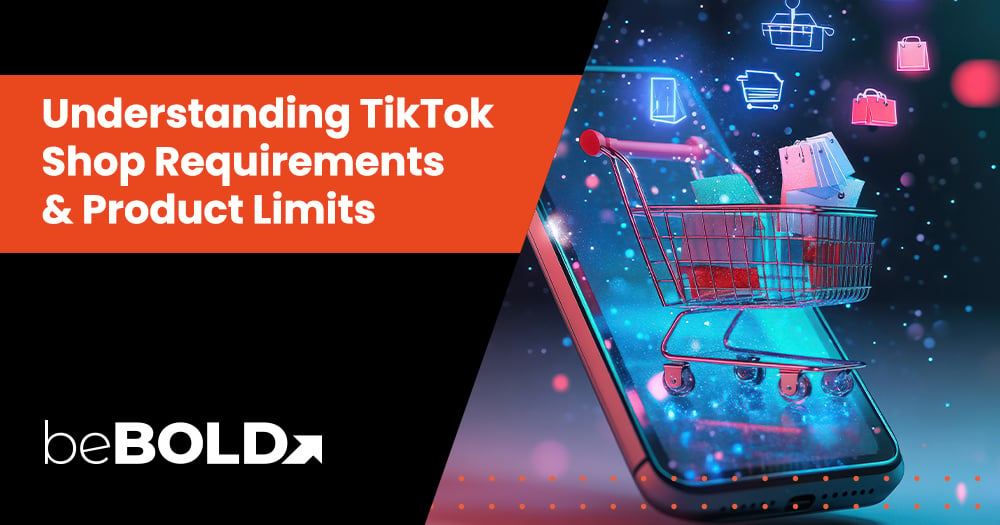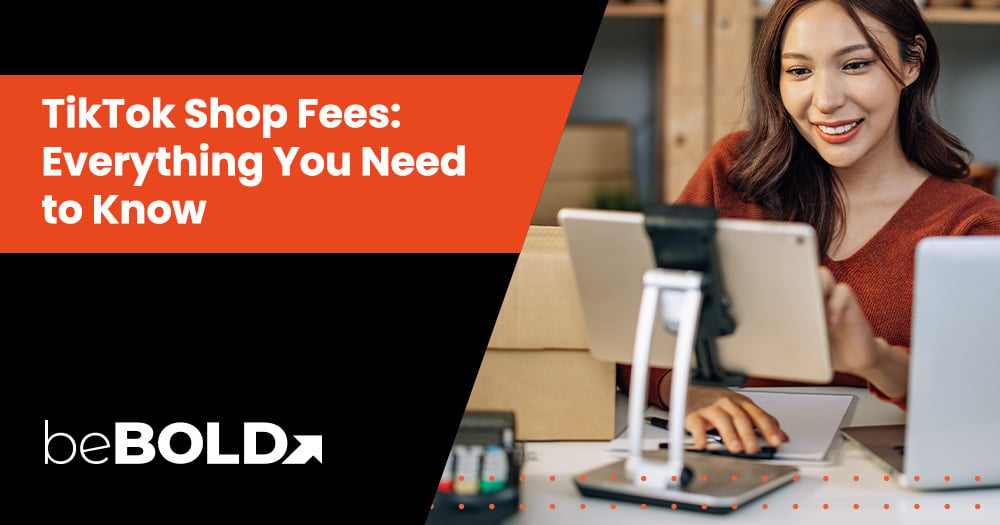Key Highlights
- This guide walks you through the entire process of listing products on Amazon, whether you're launching a new item or joining an existing listing 🛒.
- Start by selecting the right selling plan, setting up your Seller Central account, and ensuring product compliance before listing.
- Learn how to create high-converting listings with optimized titles, bullet points, images, and keywords to boost visibility and drive conversions 📈.
- Choose between FBA or FBM fulfillment methods based on your logistics capacity and customer experience goals.
- Discover how to bulk upload products using Amazon’s flat file templates—ideal for sellers scaling fast or managing large catalogs.
- Tips for avoiding common listing mistakes: weak images, vague titles, poor keyword usage, and pricing mismatches that hurt visibility and conversions .
- Covers listing optimization strategies aligned with Amazon’s A9 algorithm—focusing on SEO, pricing, reviews, and backend search terms
- Enroll in Amazon Brand Registry to protect your brand, control listings, and unlock premium marketing tools.
- beBOLD Digital offers expert support to optimize your listings for discoverability, conversions, and long-term Amazon success.
Listing products on Amazon is an essential process for any seller looking to tap into the massive e-commerce platform and reach a global audience. With millions of customers browsing the site daily, creating an effective product listing can significantly boost your visibility, attract organic traffic, and increase your sales.
However, the key to success lies in ensuring your product is showcased in the best possible way through the right titles, bullet points, descriptions, images, and keywords.
In this step-by-step blog, we'll walk you through the necessary steps to create a compelling and optimized listing, setting you up for success in the competitive Amazon marketplace. From how to add a new product to reviewing and saving your product listing, we'll cover each step in detail, ensuring your listings are fully optimized for both search engines and potential buyers.
What You Need Before Listing a Product on Amazon?
Completing a few preparatory steps before listing your product on Amazon is essential to ensure a smooth process. From choosing a selling plan to gathering necessary product details, and much more, here's everything you need to know.
1. Choose a Selling Plan
To begin with the listing process, first decide between Individual or Professional plans based on your sales volume and business goals. If you're scaling, the Professional plan unlocks bulk listing tools, advanced reports, and lower per-item fees.
2. Set Up an Amazon Seller Central Account
Now it's the time to set up Amazon Seller Central Account with accurate business details, banking information, and tax settings to avoid delays in verification. A properly set-up account ensures smooth operations and access to essential seller tools.
3. Check Product Compliance with Amazon’s Policies
Before listing, confirm that your product meets Amazon’s restricted items, category requirements, and safety standards. Non-compliance can lead to listing removal or account suspension, delaying your sales.
4. Obtain UPC Barcodes
Get a Unique Product Code (UPC) from GS1, the official global provider. This barcode is essential for tracking your product, though some categories may not require it, allowing for a GTIN exemption.
5. Identify Product Weight and Size
Accurately measure your product's weight and dimensions to calculate shipping costs and select the appropriate fulfillment method, avoiding potential misrepresentation charges.
6. Gather Product Details
To build a compelling and trustworthy product listing, prepare key information, including a keyword-optimized title, engaging description, high-quality images, and brand details.
7. Choose the Correct Product Category
Select the most relevant category based on your product's characteristics to enhance visibility and reach the right audience, boosting conversion chances.
How to List a New Product on Amazon?
If you're wondering how to list your products on Amazon, understand that listing a new product on Amazon involves a series of steps to ensure visibility and attract customers. Following these steps carefully increases your chances of success in Amazon's competitive marketplace and can decide your overall performance.
Step 1: Log in to Amazon Seller Central

The first step in listing a brand new listing product on Amazon is to log in to your Amazon Seller Central account. Amazon Seller Central is your primary interface for managing all aspects of your seller activity on Amazon.
The Seller Central offers:
- Various services, features, information, and tools to help sellers manage their businesses effectively on Amazon.
- From tracking sales and performance metrics, managing your inventory, interacting with customers, and initiating promotions — all operations are carried out from within this well-structured and user-friendly platform.
Step 2: Navigate to "Add a Product"

Listing products on Amazon is essential for any seller looking to tap into the massive e-commerce platform and reach a global audience.
With millions of customers browsing the site daily, creating an effective product listing can significantly:
- Boost your visibility
- Attract organic traffic
- Increase your sales
However, the key to success lies in ensuring your product is showcased in the best possible way through the right titles, bullet points, descriptions, images, and keywords.
Step 3: Choose the Correct Product Category

Next, to ensure your product surfaces in relevant customer searches, select the correct product category and sub-category that best fits your product.
This may be done manually by:
- Exploring Amazon's categories or using the search method. Amazon also provides a category suggestion tool, making this step easier by providing appropriate suggestions based on your product details.
- Another helpful reference is Amazon's Browse Tree Guide, which provides insight into how categories are structured and helps you place your product in the most relevant and visible spot.
Step 4: Enter Main Product Information
Once you have the correct category selected, it is time to enter your product's vital information, including the required details, such as the number of items. This product detail page helps customers understand what your product is, what it does, and why they should buy it.
Here's a quick rundown of what you need to fill:
|
Item Name |
Your Product's Official Name, which becomes the Title of the Product Page |
|
Manufacturer |
The Company or Brand that produces this product |
|
Brand Name |
The Brand under which this product will be sold |
|
Product ID |
The UPC or EAN of your product or GTIN Exemption request |
Step 5: Optimize Product Descriptions

A well-crafted product description enhances customer understanding and improves conversions.
To create product descriptions:
- Clearly explain what your product is, how it works, and why it stands out.
- Use compelling bullet points to highlight key features and incorporate relevant keywords naturally to improve search visibility.
- Keep it concise, informative, and benefit-driven to attract potential buyers.
Step 6: Add an Offer for Your Product

Once your product details are set, create a featured offer by specifying your product quantity, selling price, and condition (new or used) and selecting your fulfillment method, i.e., FBM (where you manage your inventory) or FBA (where you manage storage and shipping).
To make a featured offer:
- Ensure your pricing is competitive, factoring in market trends, expenses, and Amazon's fees.
- A well-priced product can boost sales, while your chosen fulfillment method impacts costs and customer experience, shaping your brand's success.
Step 7: Provide Safety and Compliance Information

Customers want to know they’re buying safe, high-quality products—and Amazon requires it, too.
Provide information to customers in the following way:
- Be transparent about product origin, warranty, battery details, and compliance with safety regulations, especially for hazardous items.
- Incomplete or incorrect safety info can lead to listing removal, lost sales, or customer complaints.
- Providing accurate details not only keeps your listings compliant but also builds trust and protects your brand’s reputation.
Step 8: Upload Product Images
The next crucial step is uploading high-quality, clear product images. A compelling product photo significantly impacts customer buying decisions, providing a clear view of what they're purchasing and boosting product credibility.
Here’s the Amazon’s guideline:
- Amazon mandates that the main images feature a white background, and the product should fill at least 85% of the frame.
- You must also ensure your images are sharp, informative, and meet Amazon's technical standards for clarity.
Step 9: Choose Fulfillment Method

Choosing the right fulfillment method is key when setting up your product listing.
- With Fulfilled by Merchant (FBM), you handle storage, packing, and shipping, giving you more control over inventory.
- Alternatively, Fulfilled by Amazon (FBA) lets Amazon manage storage and shipping, freeing you to focus on other aspects of your business. Each option has its pros and cons, so choose carefully.
Step 10: Review and Save Your Product Listing

Once all the details are entered, thoroughly review your entire product listing.
Include the following in your review process:
- Double-check your product details, links, keywords, images, and compliance.
- After proofreading and making revisions, click 'Save and Finish.'
- Amazon will review your listing, and any inaccuracies or violations may lead to it being suppressed or removed.
How to List an Existing Product on Amazon?
The process to list an existing product on Amazon is slightly different but equally straightforward if you're selling an existing product already available on Amazon. Let's check these steps right now.
Step 1: Log in to Amazon Seller Central and Navigate to "Add a Product"
- Start by logging into your Amazon Seller Central account and navigating to the 'Add a Product' option under the Inventory section in the main menu.
- This is where you'll begin to hitch your product onto an existing listing.
Remember, Amazon does not favor duplicate listings for the same product, so if someone is already selling the same product you intend to sell, your correct action is to join their existing listing.
Step 2: Find the Existing Product You Want to Sell
- Once all information is in place, review your entire product listing thoroughly.
- Ensure all details are accurate, including links to similar products, keywords are appropriately integrated, product images echo the quality of your product, and all relevant or required regulations are abided by.
Ensure the product details—size, color, brand, and specs—match yours exactly to avoid misrepresentation, which can lead to suspension and lost trust. Once verified, feel free to add your offer.
Step 3: Select Your Product
- Upon finding the exact product listing matching your product's details, select it. This is the most crucial step in the process.
- Sellers must be cautious about matching their products' exact colors, different colors, variations, dimensions, or model numbers to the existing product listing.
Inaccurate or mismatched listings can cause returns, bad reviews, or suspension. Ensure your product, including the product name, aligns perfectly with the listing and meets Amazon's condition guidelines before proceeding.
Step 4: Submit Documents for Approval (if needed)
- If your product has brand restrictions, Amazon may require invoices or authorization letters from the brand owner or manufacturer to approve your listing.
- Submitting these documents ensures compliance and prevents delays.
Amazon strictly monitors for violations and counterfeit products. Without proper authorization, your listing may be suspended or selling privileges denied, so always secure necessary permissions before proceeding.
Step 5: Enter Your Offer Details
- Once Amazon approves your request, enter your offer details, including product pricing, available quantity, item condition, and fulfillment method.
- Set competitive pricing while accounting for expenses and profit margins. Ensure correct inventory levels to prevent stockouts.
Based on your operational needs and desired control, choose between FBA (Amazon handles logistics) or MFN (you manage logistics).
Step 6: Review & Save Your Offer
The final step in listing an existing product on Amazon is to review your offer before hitting 'Save.'
- Check for accuracy and consistency in all the details entered in the previous steps.
- Ensure there are no discrepancies in the pricing details, product condition, product identifiers, and every other element that forms part of your offer.
- All these examined, click 'Save and Finish'.
Now, your product offer gets added to the existing Amazon product listing, and your product is ready to be sold under the listing of an already successful item on Amazon.
How to Optimize Product Listings for Amazon’s A9 Algorithm?
Amazon’s A9 algorithm ranks products based on relevance, performance, and customer engagement. To increase visibility and conversions, sellers must optimize their listings strategically.
Key Optimization Strategies:
- Title Optimization – Use primary keywords naturally, keeping titles concise and informative. Ensure readability while including essential details like brand, features, and size.
- Bullet Points & Descriptions – Highlight product benefits in bullet points, using relevant secondary keywords. The description should expand on key features while maintaining clarity.
- High-Quality Images & Videos – Amazon prioritizes listings with clear, professional images from multiple angles. Lifestyle images and product demo videos enhance engagement.
- Backend Search Terms – Use all available character space in the backend search terms to target additional relevant keywords without keyword stuffing.
- Competitive Pricing & Buy Box Strategy – Price competitively to increase Buy Box eligibility, improving rankings and conversions.
- Customer Reviews & Ratings – Encourage positive reviews through excellent customer service, as higher ratings boost ranking potential.
- Fast & Reliable Fulfillment – FBA (Fulfillment by Amazon) can improve rankings by ensuring faster shipping and better customer experience.
By aligning your product listings with A9’s ranking factors, you enhance discoverability, click-through rates, and sales performance.
Bulk Uploading Products to Amazon
Managing individual product listings on Amazon can be time-consuming and inefficient, especially if you're scaling your business or launching multiple products. Bulk uploading allows sellers to list hundreds or even thousands of products at once, saving time and reducing errors.
However, if not done correctly, bulk uploads can lead to listing errors, suppressed products, or incorrect data mapping—all of which can hurt your sales. Understanding the right tools, file formats, and best practices is key to a smooth and error-free bulk upload process.
How to Use Amazon's Flat File Upload?
Amazon's Flat File Upload is the most powerful tool for bulk listing, but it can be frustrating and overwhelming if you're not familiar with spreadsheets and Amazon's category-specific templates. Here’s how to make the process smoother:
- Download the Right Template – Amazon provides category-specific flat file templates. Choosing the wrong one can cause listing failures.
- Fill in Required Product Data – Input key details like SKU, title, description, price, and category, ensuring they match Amazon’s guidelines.
- Use Valid Values – Amazon has predefined values for attributes like size, color, and material. Incorrect entries can cause upload errors.
- Check for Errors Before Uploading – Use Amazon's Listing Loader Tool to validate your file and fix any issues before submitting.
- Upload & Monitor Your Listings – After uploading, check Amazon Seller Central for processing errors, missing fields, or incorrectly assigned categories.
Pros & Cons of Bulk Listing
Before you jump into bulk uploads, it's important to understand the advantages and potential pitfalls. So let's have a look into them.
Pros:
- Saves Time – Upload thousands of products at once instead of manually listing each one.
- Ensures Consistency – Standardized data across all listings improves SEO and customer experience.
- Easier Updates – Quickly modify pricing, inventory, and product details in bulk.
Cons:
- High Error Risk – One mistake in the file can cause multiple listing errors or suppressions.
- Requires Technical Knowledge – Sellers must understand flat file templates, Amazon’s data structure, and bulk editing rules.
- Processing Delays – Large files may take several hours or even days to process, delaying product visibility.
Amazon Brand Registry: Why It Matters
If you’re selling on Amazon and want to protect your brand, improve visibility, and increase conversions, enrolling in Amazon Brand Registry is a must. Without it, you risk counterfeiters hijacking your listings, losing control over product information, and missing out on valuable marketing tools.
Why Enroll in Amazon Brand Registry?
- Brand Protection – Remove counterfeiters and unauthorized sellers.
- Control Your Listings – Prevent others from altering product details.
- A+ Content & Marketing Tools – Enhance listings with visuals, brand stories, and comparison charts
- Advanced Reporting – Detect and report IP violations easily.
- Sponsored Ads & Stores – Gain access to exclusive advertising tools for better traffic and sales.
Common Mistakes When Listing a Product on Amazon
Getting your product seen and ranked on Amazon starts with a well-optimized listing, but too many sellers overlook critical details—leading to low visibility, suppressed listings, and poor conversions. Avoid these common mistakes to set your listings up for success.
1. Poor Keyword Optimization
Using generic or irrelevant keywords can cause your product to get lost in Amazon’s search results. Instead:
- Research high-converting keywords using tools like Helium 10 or Jungle Scout.
- Include primary keywords in titles, bullet points, and backend search terms naturally.
2. Weak Product Titles
Your title is the first thing customers see—yet many sellers stuff it with random words or make it too vague. Instead:
- Keep it concise yet informative, following Amazon’s title guidelines.
- Use the most relevant keywords but avoid keyword stuffing.
- Include key selling points, like material, size, or unique product features.
3. Low-Quality Product Images
Images sell your product before the description does, yet sellers often use unclear, low-resolution, or non-compliant images. Instead:
- Use high-quality images (at least 1000x1000 pixels) for zoom functionality.
- Show multiple angles, lifestyle images, and infographics to highlight features.
- Make sure the main image has a white background (Amazon’s requirement).
4. Poorly Written Bullet Points & Descriptions
Your bullets should convince the customer to buy, but many listings either lack detail or are too long and difficult to read. Instead:
- Focus on benefits over features—how does your product solve a problem?
- Use short, clear sentences with easy-to-read formatting.
- Avoid making them too technical unless necessary for your niche.
5. Pricing That Doesn't Match the Market
Overpricing or underpricing can hurt sales and Buy Box eligibility. Instead:
- Research competitor pricing and position yourself competitively.
- Use Amazon's automated pricing tools to stay competitive.
- Consider bundling or adding value instead of cutting prices.
6. Ignoring Backend Search Terms
Amazon allows 250 characters for backend search terms, yet many sellers leave them blank or misuse them. Instead:
- Add synonyms, alternate spellings, and related terms customers might use.
- Don’t repeat keywords already used in the title or bullet points.
- Avoid competitor brand names (Amazon prohibits this).
Boost Your Sales with Expert Amazon Product Listing Services by beBold Digital
Looking to boost your sales on Amazon? Look no further than beBold! Our expert Amazon product listing services are designed to help you optimize your listings, enhance visibility, and drive more conversions. With a strategic approach to keyword research, compelling product descriptions, and eye-catching images, we ensure your products stand out.
Let our team of professionals help you craft high-performing listings that maximize your sales potential and deliver results. Choose beBold Digital and take your Amazon business to the next level today! Contact us now!
Conclusion
Listing Products on Amazon is a doorway to exciting business growth opportunities. While the process may seem intricate at first glance, armed with the proper knowledge, it can be maneuvered easily.
By adhering to Amazon's selling policies, identifying the correct product categories, using efficient keyword optimization, and making conscious decisions about fulfillment methods, you can list new and existing products that cater to a specific niche effectively and precisely.
Whether you're an established seller looking to expand your Amazon brand catalog or starting your e-commerce journey, understanding the ins and outs of Amazon product listing is pivotal. It paves the way to creating appealing storefronts that can convert curious visitors into loyal customers.
Frequently Asked Questions
How much does it cost to list a product on Amazon?
Amazon charges a referral fee on each sale, which varies by category but averages around 15% of the item's price. Additionally, there is a per-item fee of $0.99 for the Individual Selling Plan or a subscription fee of $39.99/month for the Professional Selling Plan.
Is listing items on Amazon free?
Listing items on Amazon is not free. The cost varies depending on whether you opt for an individual or a Professional selling plan. There are also referral and variable closing fees on each item sold, alongside monthly subscription charges for the Professional plan.
What is required to list a product on Amazon?
To list a product on Amazon, you must select the right category, ensure no product restrictions, and follow Amazon's guidelines. You should also provide accurate product information, images, and pricing.
Can I sell on Amazon as an individual?
Yes, individuals can sell on Amazon through the Individual Seller Account. This account allows you to list products, but note that fees and limitations differ from those of a Professional Seller Account. Ensure compliance with Amazon's policies for a smooth selling experience.
Can I sell on Amazon without a barcode?
A barcode, like a Universal Product Code (UPC) or European Article Number (EAN), is typically required to list a product on Amazon. However, if you're selling in a category that doesn't require a standard product ID, you can apply for a GTIN exemption.
Ready to List Your Products the Right Way? Avoid costly mistakes and maximize your product’s visibility on Amazon. Book a free consultation with our experts today and get personalized guidance on optimizing your listings for better rankings and higher sales.










Comments